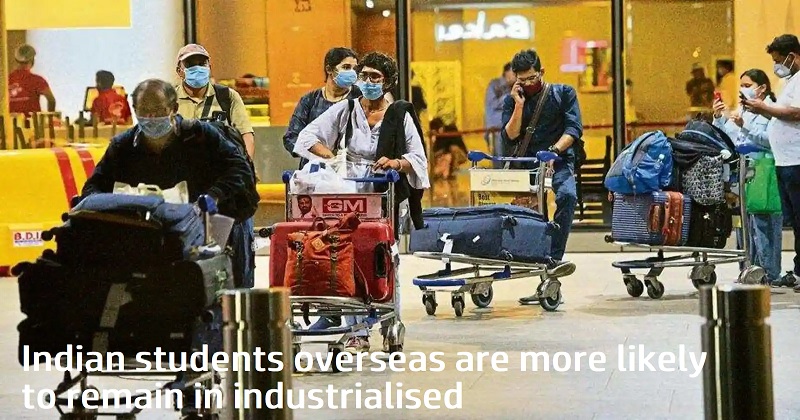
According to an Organization for Economic Co-operation and Development research on global migration patterns, among all foreign students studying abroad in economically developed nations, Indians are the most likely not to return home and work in their host nation (OECD).
By focusing on the countries of origin and destination of students enrolling for academic degrees in OECD countries, the report ‘International Migration Outlook 2022,’ published on Monday, offers an overview of developments in international migration flows and policies up until 2021. The OECD is an organisation made up primarily of industrialised economies.
The majority of international students in OECD nations are from China (22%), followed by India (9%). According to the survey, this is because these two nations are home to approximately a third of the world’s population between the ages of 20 and 29.
The report claims that Indian and Chinese students behave ‘remarkably differently’ when it comes to extending their study visas or acquiring employment permits so they can remain in their host nations. Students from India are not only more likely to renew their visas, but also have the best likelihood of still having a work permit five years after arriving in the country.
Indians have significantly higher retention rates than Chinese students in almost every OECD nation, including Canada, Germany, Australia, New Zealand, the United Kingdom, and Japan, according to a comparison of the stay rates of Indian and Chinese students who had obtained their education permits in 2015.
Similar trends can be seen in the transfer from student visas to work permits, with Indians making this transition more quickly than Chinese.
For example, in Germany in 2020, Chinese students on study permits made up 23% of all students who had entered the nation in 2015, compared to only 10% of Indian students. According to the research, this shows that the majority of Indians had already applied for work visas.
It becomes evident when examining the figures particular to Canada. By 2020, 71% of Indian students accepted in 2015 had a work visa, compared to 18% of Chinese students.
Indian students have historically made up the majority of those who directly switch from a study permit to a temporary high-skilled permit in the United States (H-1B).
They represented 60% of these changes in 2019, up from about 40% in 2010. Chinese nationals, on the other hand, comprised up 23% of direct transfers in 2019 compared to 31% in 2015, the research states.
According to the research, more Indian students than Chinese students are enrolled in master’s or doctoral programmes, which could account for Indian students’ ‘quicker transfer to the labour market and shorter term on an education visa.’

Post Your Comments